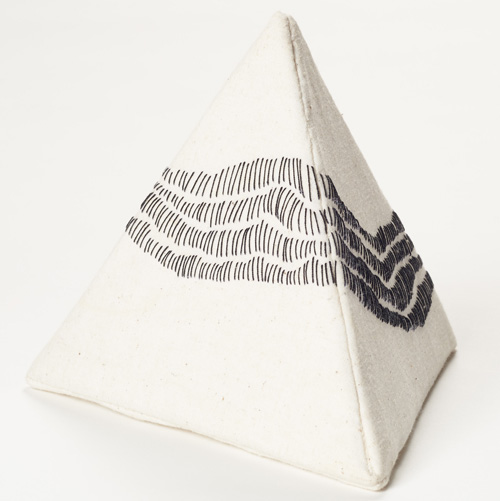THE most basic knitting stitch and probably the first one learned by everyone is garter stitch.


In a recent post, the first of several on this theme, I showed how the lines in a newspaper ad featuring part of head and shoulders of a man wearing a heavy knitted sweater inspired one of my wall quilts. Since I made Waterweave twenty years ago, I’ve had it lurking in the back of my mind that garter stitch is a wonderful pattern of line and shape to explore,. I can’t think why its taken so long, but perhaps I needed to make the Bungle Bungles quilts for this notion to move forward again. So I’m going to take time today to play with this basic linear pattern and see where it might lead.
While posting this garter stitch diagram, I remembered my first art quilt, Ancient Expressions 1 I cropped this segment from what back in 1988 was an excellent quality 35mm slide image, so its a bit grainy. I’ve always had my work photographed using a good photographer using the best technology available at the time, but the quilt sold from the 1989 exhibition “Expressions in Quilting ” so I’ve never been able to have it re-photographed in digital format.

On the horizontal bands of AE 1, I used linear quilting patterns from drawings I found in a book on the ancient Anasazi people of America’s Southwest. We lived in Denver for a yew years in the late ’80s, and came to know that region of the USA well, including the wonderful petroglyphic sites, ancient village ruins and some of the history of the now disappeared Anasazi people. Almost without thinking I used characteristic patterns and imagery from the Southwest in that series of quilts, just like everyone else did and still does. Patterns developed in different cultures and regions of the world for are found on rock, ceramic, metal, wood, leather and fabric surfaces. They have much in common, and we recognise them as man-made marks even if no one around today is absolutely sure of their significance. But bearing in mind the issue of cultural misappropriation, today I might not make some of that series in quite the same way. Anyway, looking back over a couple of decades, I see that appealing arc shape repeatedly popping up in my work in various ways.
As I’ve said before – a line is a seam waiting to happen.











